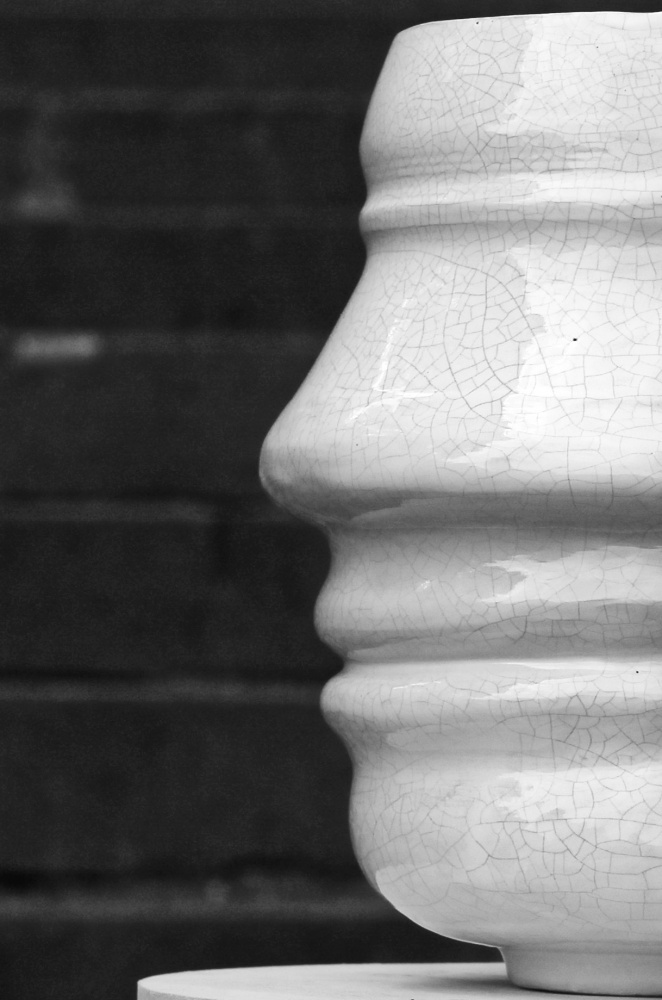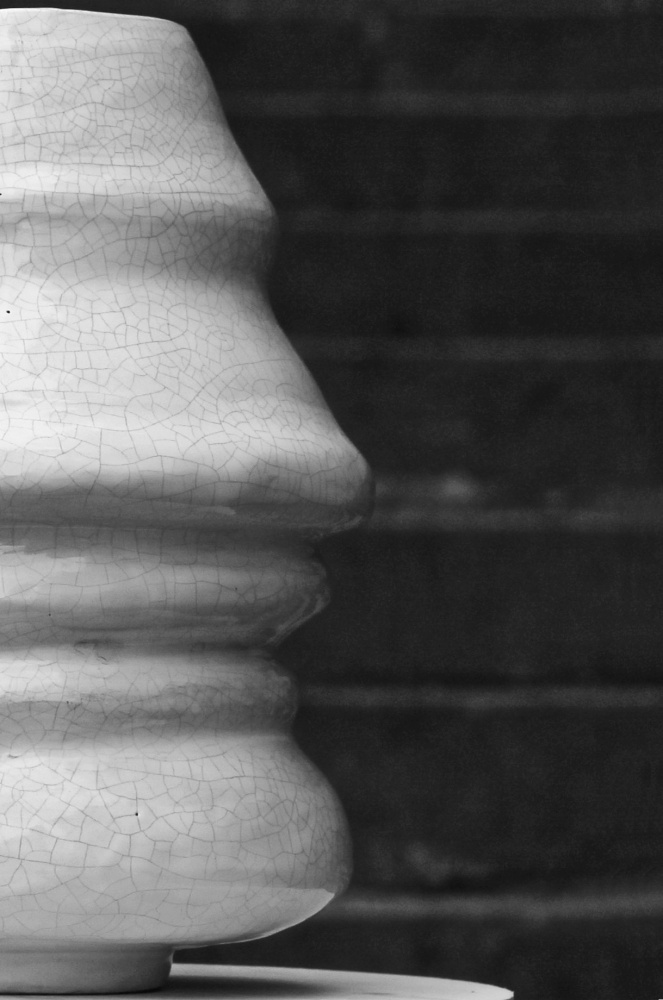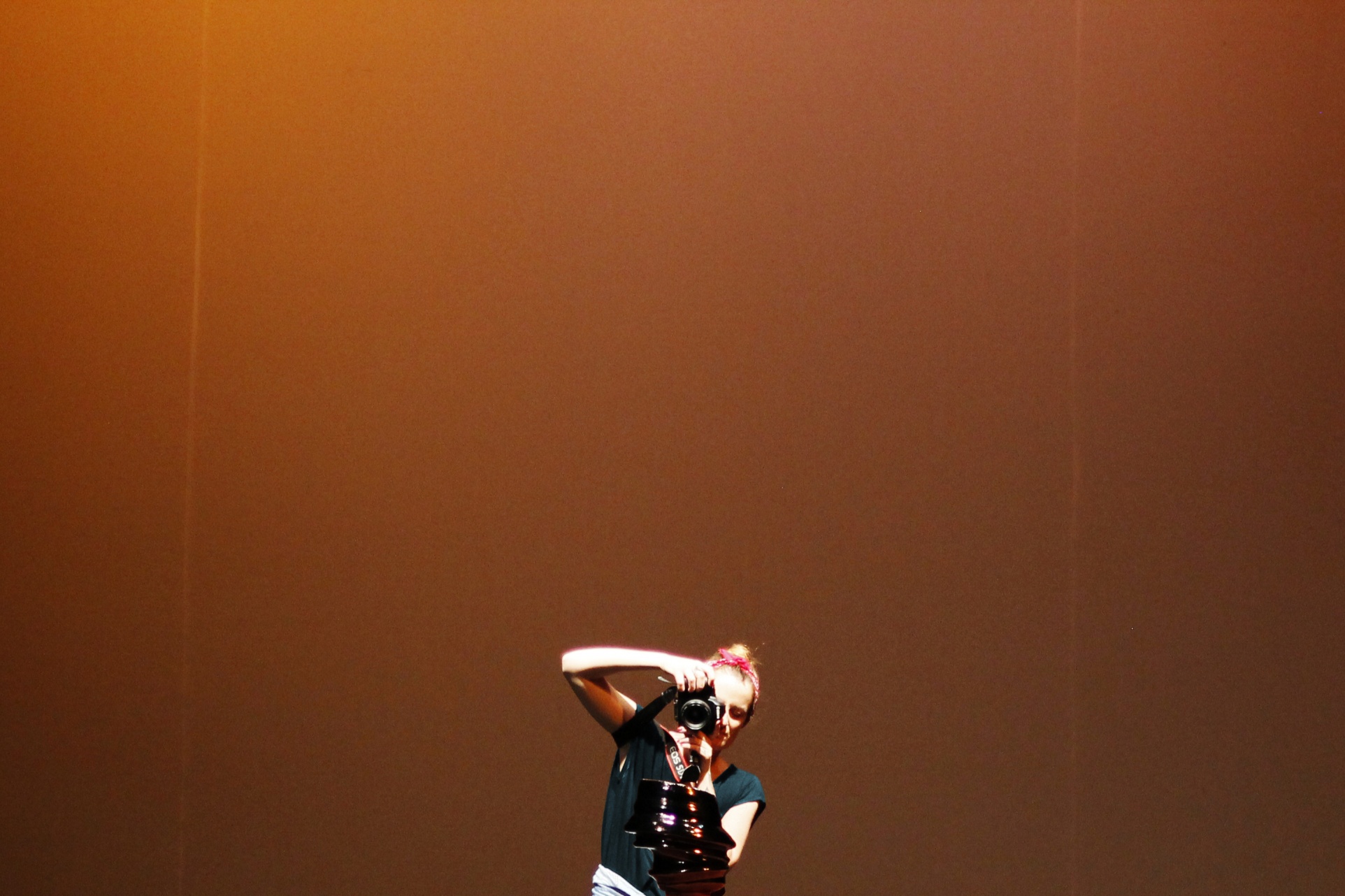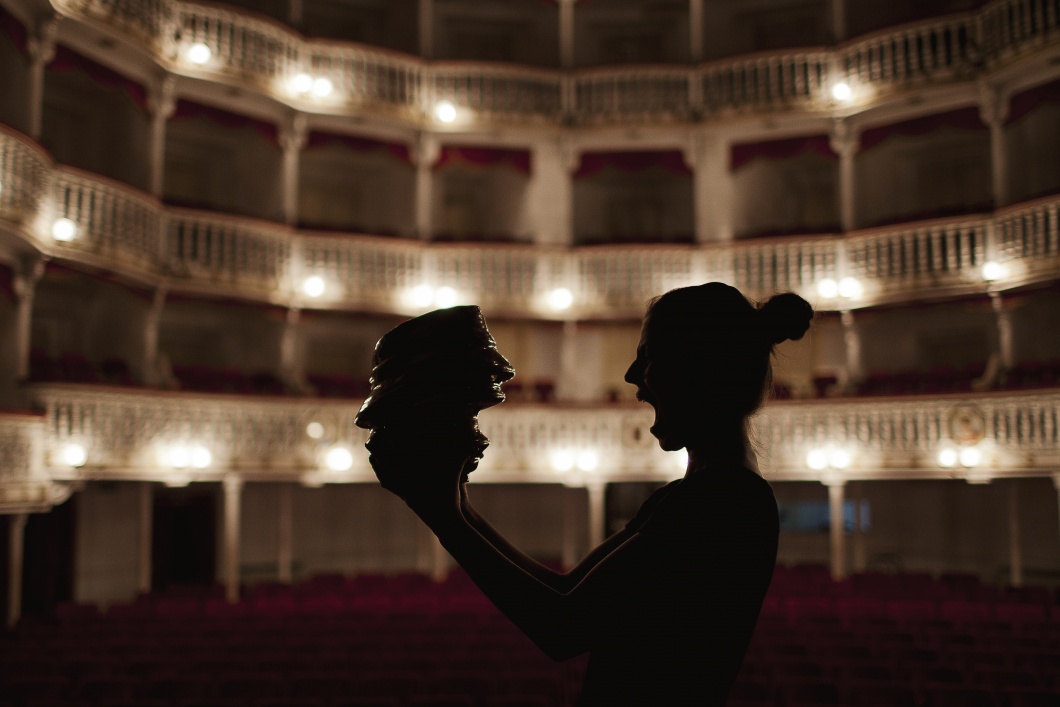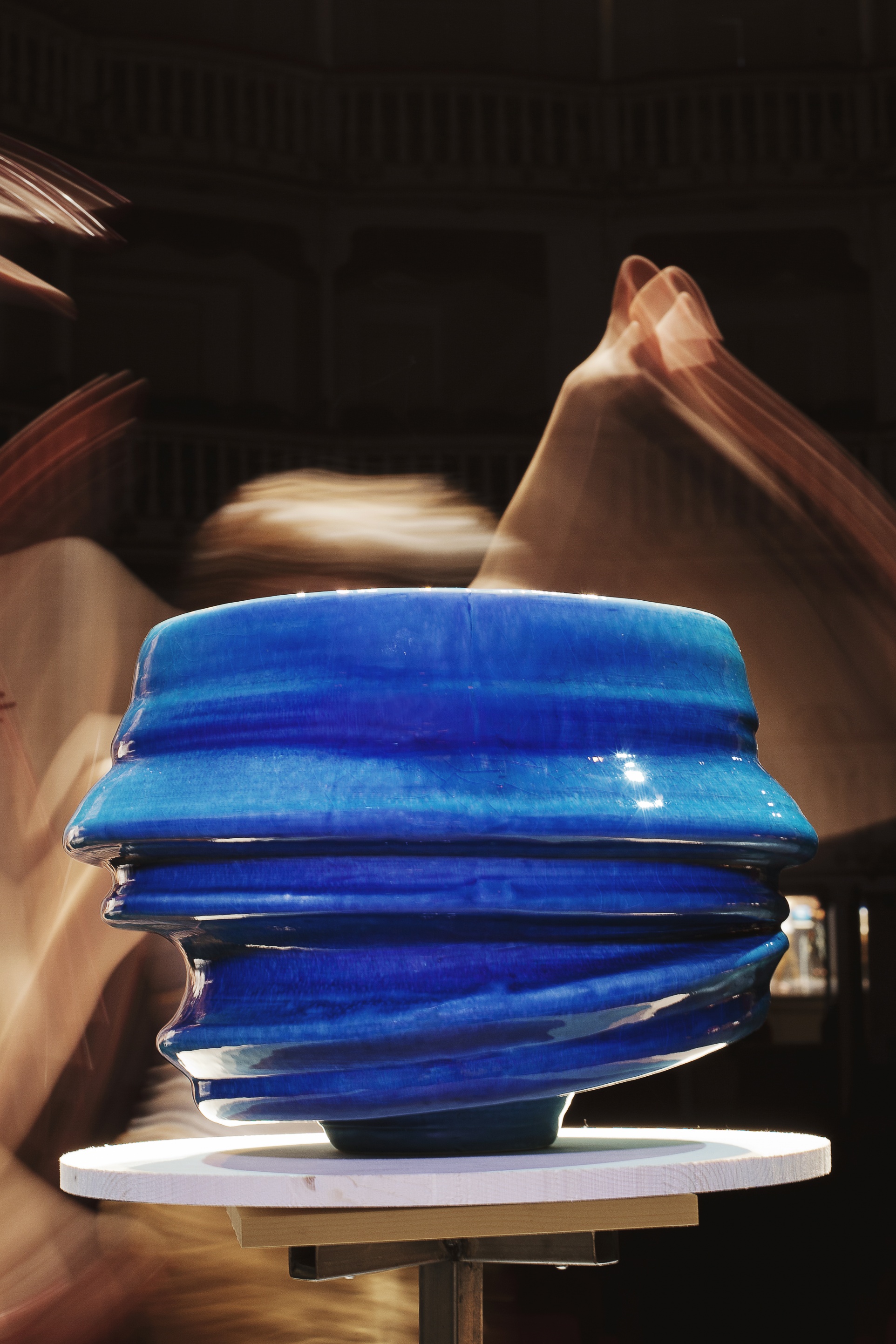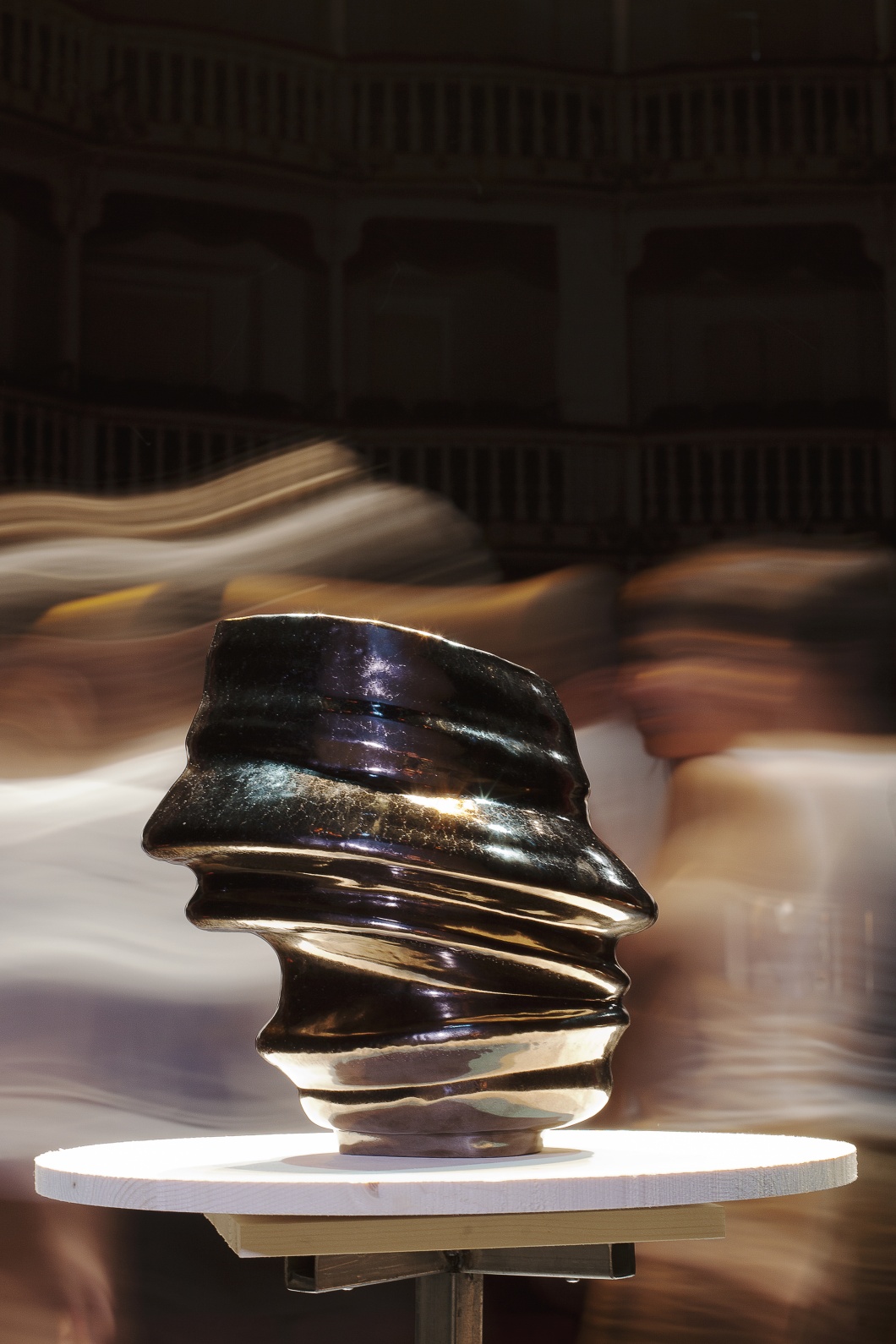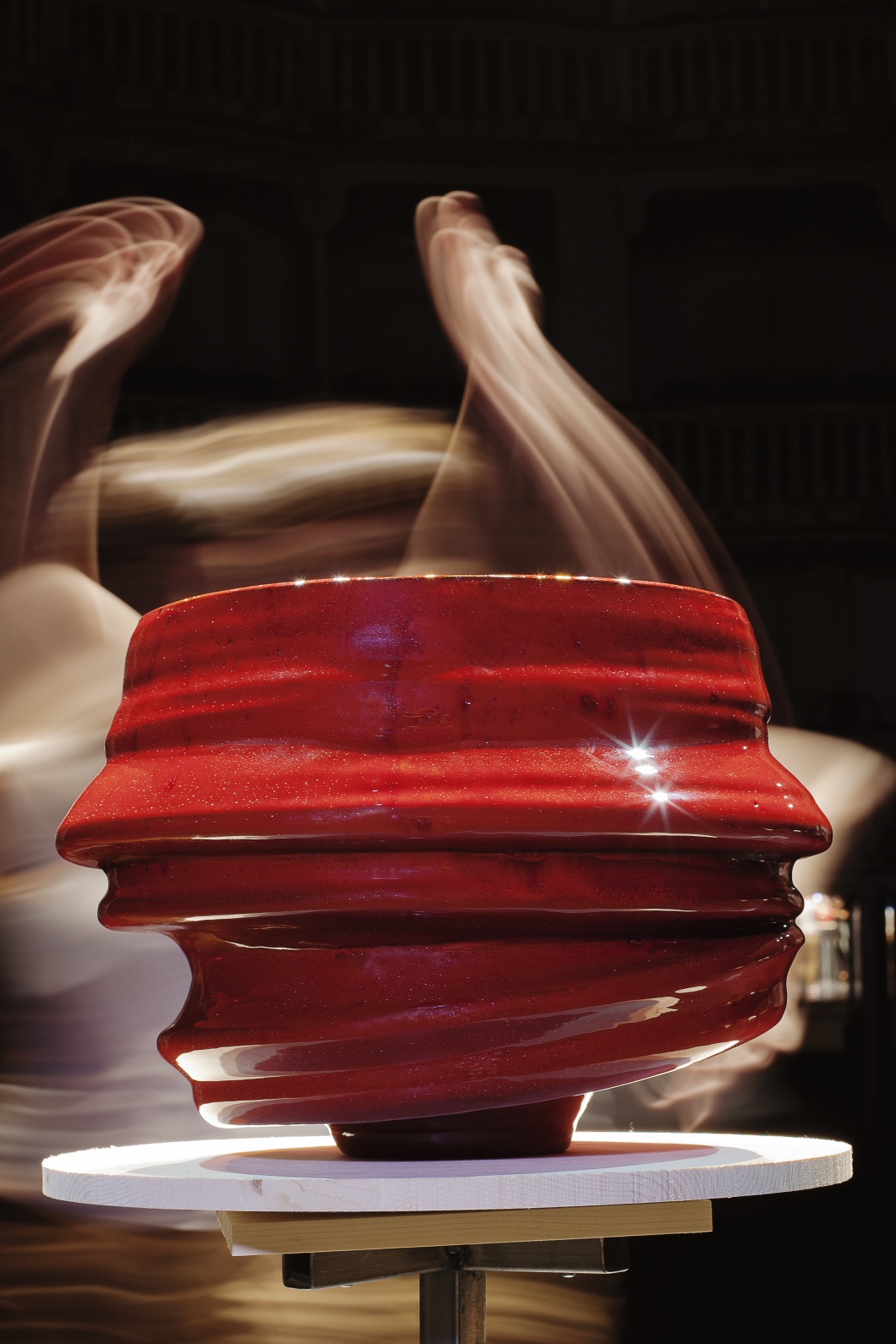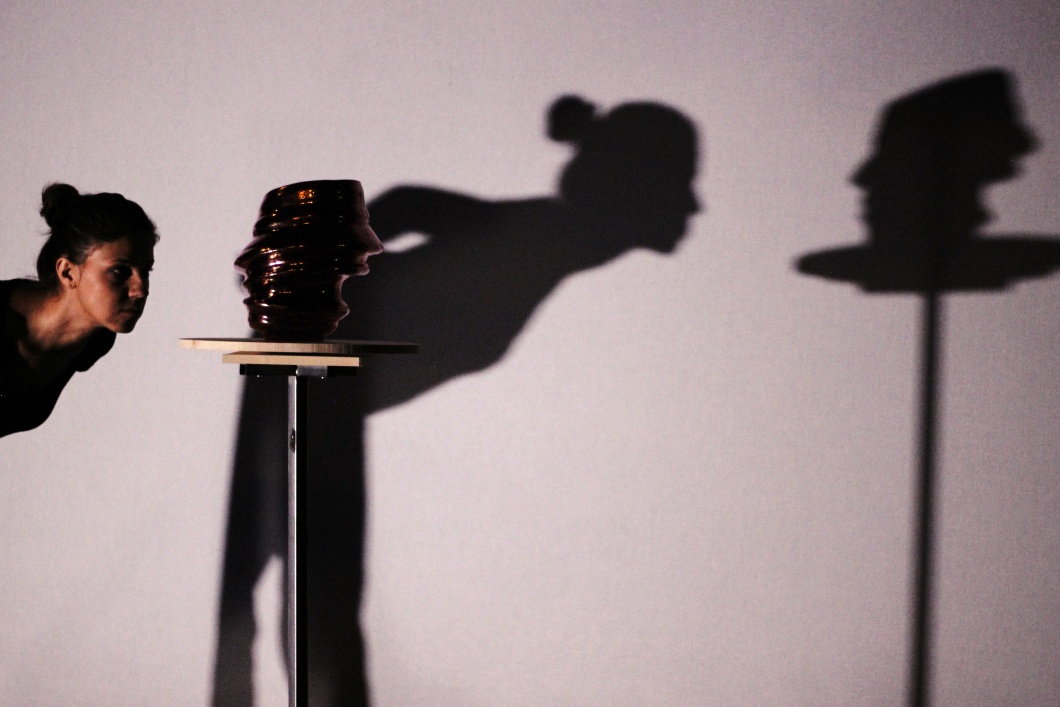Theatre
Lathe imposes on objects a symmetry that encages movement and annihilates time. Digital design tool, on the other side, allowed us to break this
Symmetry.
We reduced the rotational speed of a virtual potter’s wheel to deform the profile of a vase,
Dis-continuously.
Through disorder, we increased entropy. Since our aim was not just to describe, but to tell, we had to recall time from the chaos we achieved, to go beyond decoration and materialize a movement that the observer could interpret as an action.
We wanted to do an object that deserves more than an
Instant,
because it is not about tracking borders. Two instants were not enough too, because we did not want to deceive or disappoint with illusions. We wanted to occupy space, like a statue does, and we wanted to occupy time as a told story. But we did not want to fix only a moment, like a statue does, nor we wanted to paint a story on the surface of a
Vase.
F l u x u s
is the result of a formal research on the expressive potential of synesthetic representation of time. Narration begins from the most recognizable figurative element of reality, the human face profile, to improve empathy between the observer and the observed.
To make the action be entirely visible, we had to alter the circumference as the action itself became more violent. The mathematical relation, between the lines and the way they follow each other, is geometrically expressed by the “neck” of the vase.
We chose to work with ceramic because of the deep symbolism between clay and the myth of creation in several cultures, probably due to the aleatory component of clay during transformation that reminds of the fragility and diversity among human beings. We chose glaze, instead, to liquefy light and melt horizons, such as a mirror, where coordinates of space are replaced by coordinates of
Time
Ours is an attempt of putting on scene a dialogue in which perceptions and perspectives shall constantly collapse into each other. As the observer changes position in space, fluxus changes moment in time. This fracture, between the actual experience of the vase in reality and the habit of a scream, as gathered in memory, offers observer the chance to match our intentions with his inner tension and so to develop a new
Awareness.
We are not interested in the truth behind the shadow. We want to focus on the shadow itself to investigate the essential. Time and space are fungible quantities which we can manipulate and coordinate to affect perception and to create our own reality, by determining the way images are mingled together.
In other terms,
Rhythm.
